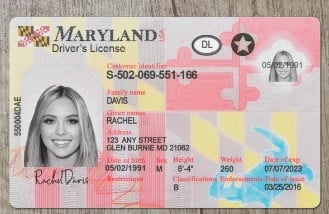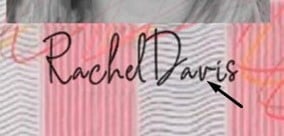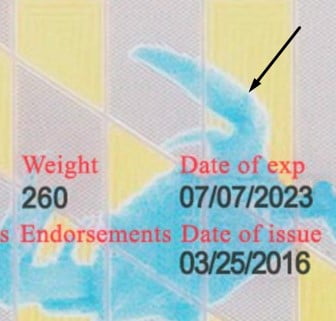Last Updated on: 14th December 2023, 08:35 am
Spotting a fake Maryland ID is an important skill for anyone working in the hospitality industry, law enforcement, or retail. It is not always easy to detect a fake vs real Maryland license. It is important to know how to spot and react if you come across one. This guide will describe the common features of a genuine Maryland ID. Additionally, it will provide steps for responding if you suspect an ID is fake.
- Overview: Genuine Maryland IDs
- How to Make a Fake Maryland ID?
- How to Spot Fake Maryland IDs
- Below are a list of features used to distinguish fake vs real Maryland ids:
- Here are the 4 easiest ways to spot a Maryland fake ID:
- 1. Maryland Identification Signature
- 2. Optically Variable Feature
- 3. Blurry Microprint
- 4. Maryland Raised Print
- Conclusion
Overview: Genuine Maryland IDs
Maryland IDs are issued by the Motor Vehicle Administration (MVA) and are printed on high-grade plastic. They feature the Maryland state flag in the center along with the state seal and the words “Maryland Driver’s License or Identification Card” written in bold, capital letters.
The back of the card includes a ghost image of the front, as well as information about restrictions placed on the holder of the ID such as age restrictions or medical conditions.


Just like any regular American identification card, Maryland licenses often have several distinguishing characteristics that make them easy to spot when compared with an authentic one.
Generally, fakes have text that is off-center or misspelled; they also often have colors that are not quite right or an incorrect font size. Additionally, many fakes have low-quality printing that can make them look blurry or pixelated when viewed up close. Finally, many counterfeit IDs have holograms that are not quite right; they may be slightly off color or smudged.
How to Make a Fake Maryland ID?
If you are looking to get a fake id that works then, Maryland can the best choice. There are several steps to creating a replica of this id that looks like the actual counterpart. The first step in the printing process is to prepare the digital template of the Maryland license.
This includes incorporating several security features such as holograms, UV printing, and microprinting. The design is created using specialized software and is then sent to the printer for production.
Once the design is finalized, the printer produces a print file that includes the layout, color scheme, and other specifications for the ID. This print file is then loaded onto the printer, and the printing process begins.
After the images have been printed onto the card, the printer applies a layer of clear film over the top of the ID. Finally, the printer applies a layer of laminate to the surface of the ID.
This laminate is designed to provide an additional layer of protection and durability to the card. It also helps to prevent tampering by making it difficult to remove or alter the printed images.
In conclusion, the printing process for Maryland IDs involves several steps to ensure that the final product is secure and tamper-resistant. The use of specialized software, printers, and security features such as holograms, microprinting, and UV printing help to prevent counterfeiting and ensure that the IDs are of the highest quality. By following a strict printing process, Maryland IDs are some of the most secure and durable IDs available today.
How to Spot Fake Maryland IDs
Maryland id cards are printed using a combination of high-tech security features and traditional printing techniques. The (MVA) uses a secure printing facility to produce Maryland driver’s licenses and identification (ID) cards. The printing process is highly regulated and utilizes a variety of security measures to ensure that each ID is genuine and tamper-proof.
Below are a list of features used to distinguish fake vs real Maryland ids:
- Legitimate (MD) licenses are manufactured using a process called digital imaging and facial recognition technology to produce ID cards.
- Digital imaging allows for a high level of detail and accuracy, ensuring that the ID card matches the image on the individual’s driver’s license or other identification documents.
- Facial recognition technology is used to verify the identity of the individual, ensuring that the ID card is issued to the correct person.
- The printing process also utilizes a variety of security features to prevent counterfeiting and tampering.
- One of the most significant security features is the use of polycarbonate material, which is more durable and secure than traditional plastic. The plastic is resistant to cracking, peeling, and delaminating, making it extremely difficult to alter or duplicate.
The most frequently used fake id states are manufactured using Polycarbonate replacing Teslin. In addition to the use of polycarbonate material, Maryland licenses also include several other security features.
Here are the 4 easiest ways to spot a Maryland fake ID:
1. Maryland Identification Signature


The signature panel on a genuine Maryland ID will be made of the same material as the rest of the card and should have raised printing. Use your fingers to feel for the raised printing, and verify that the signature matches the cardholder’s name. If the signature panel looks different, it may be a fake ID.
2. Optically Variable Feature


Maryland ID cards come with a feature called optical variable ink (OVI), certain portions of the id card changes color when viewed from different angles. Genuine Maryland ID’s have a small state flag with an OVI that changes color. If the OVI is missing or does not change colors, it may be a fake ID.
3. Blurry Microprint
One of the most common security features on Maryland ID cards is microprinting. This is a technique where small text is printed in areas of the ID card that are difficult to reproduce, such as the signature panel. To verify that the ID is genuine, use a magnifying glass to read the small text. If it is genuine, the text will be clear and legible, while fake ID’s may have blurry or fuzzy text.
4. Maryland Raised Print


The raised parts on the Maryland ID can take different forms, depending on the specific design of the ID. Typically, the raised parts will spell out the words “Maryland” or “ID” in raised letters or numbers.
The raised parts can also include other design elements, such as the state seal or a hologram. The newer version of the license also comes with tactile driver’s license number and customer information such as dob. When compared to a real license, fake ids may have this feature missing due to lack of laser equipment.
Conclusion
Overall, Maryland ID’s are printed using a combination of high-tech security features and traditional printing techniques to ensure that each ID is genuine and tamper-proof. The Maryland MVA is committed to providing secure and reliable identification documents that are difficult to counterfeit or alter.
